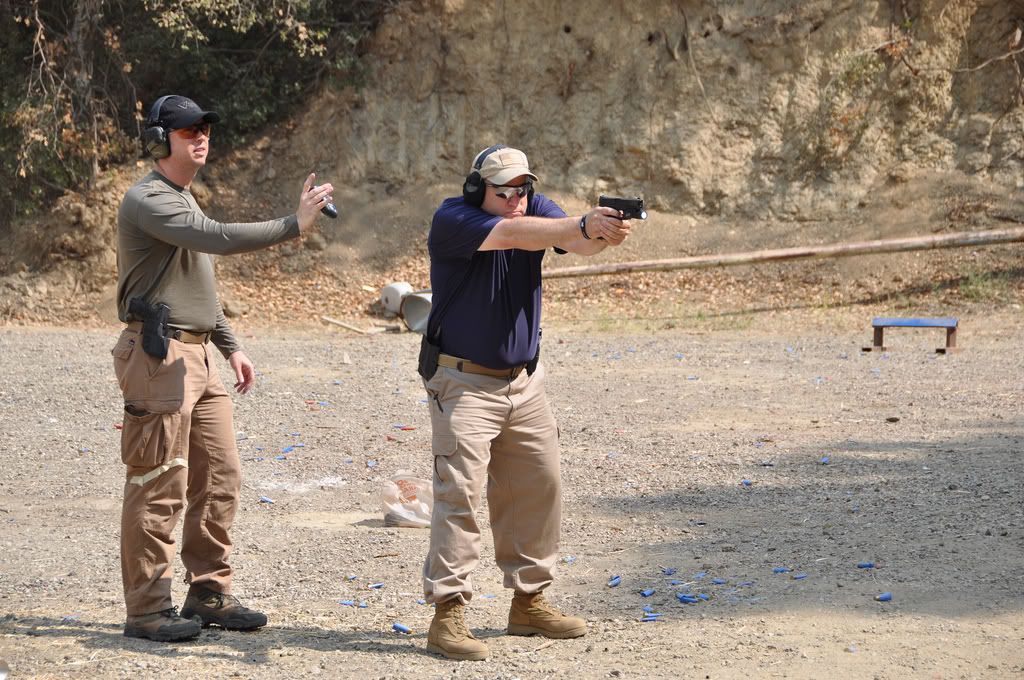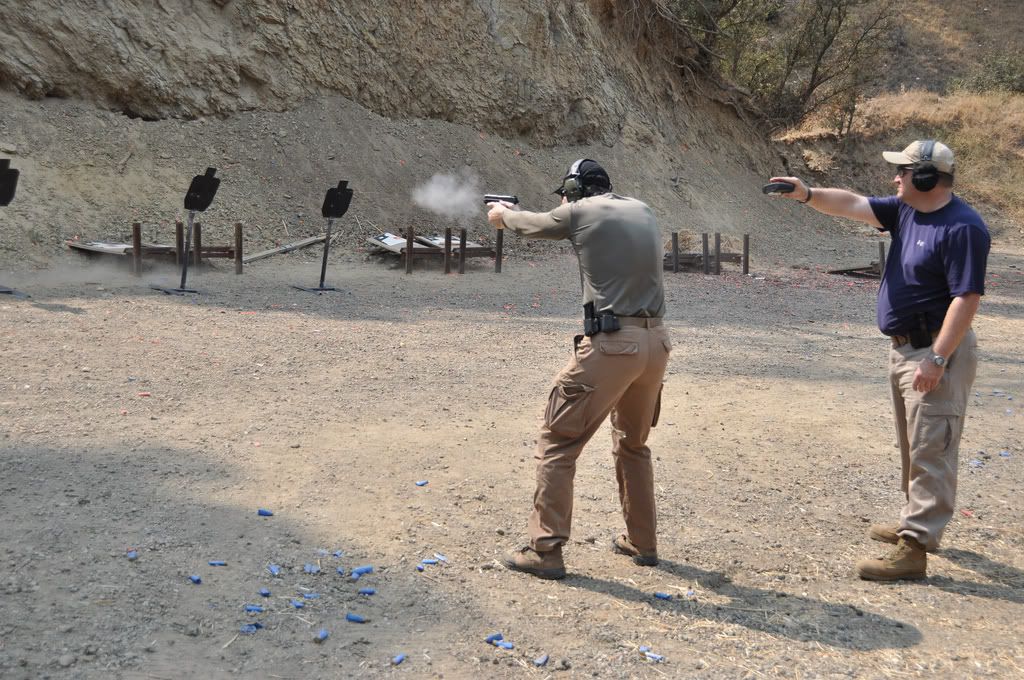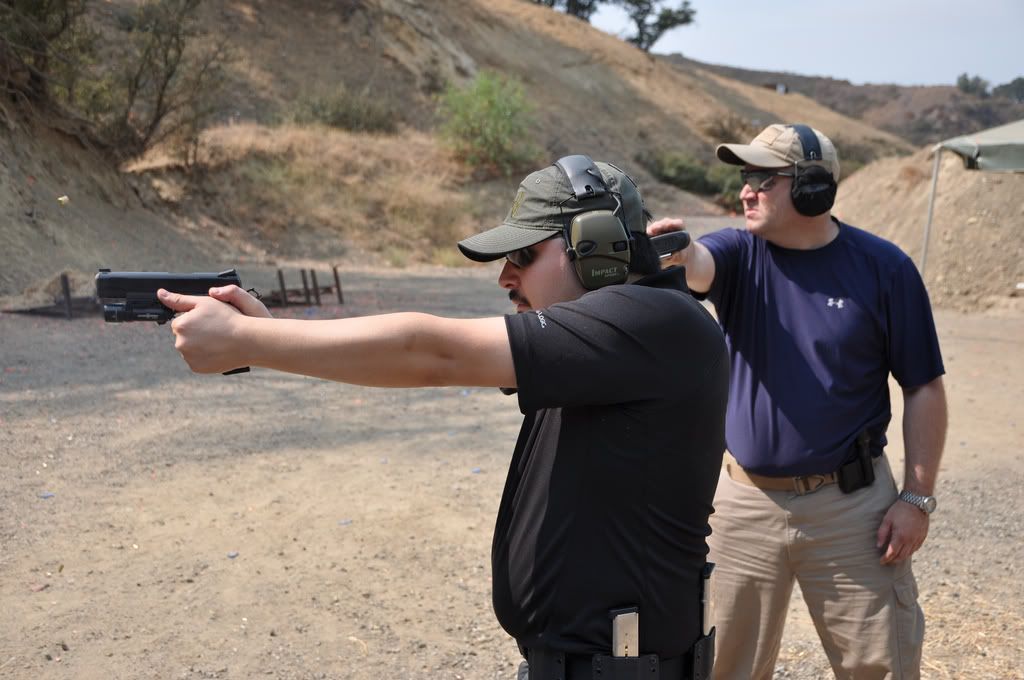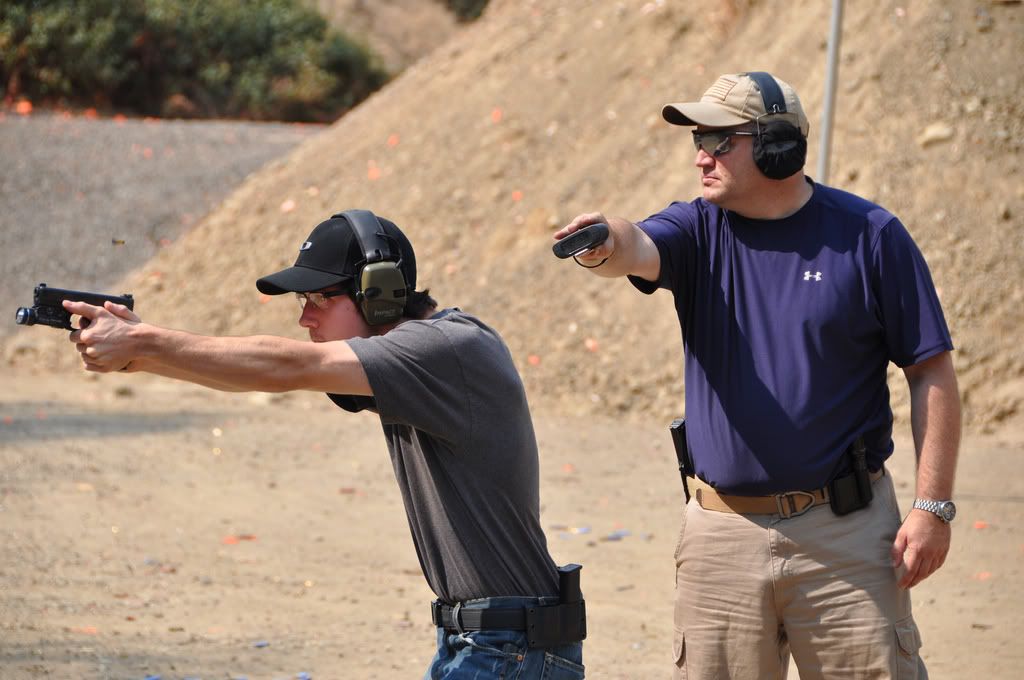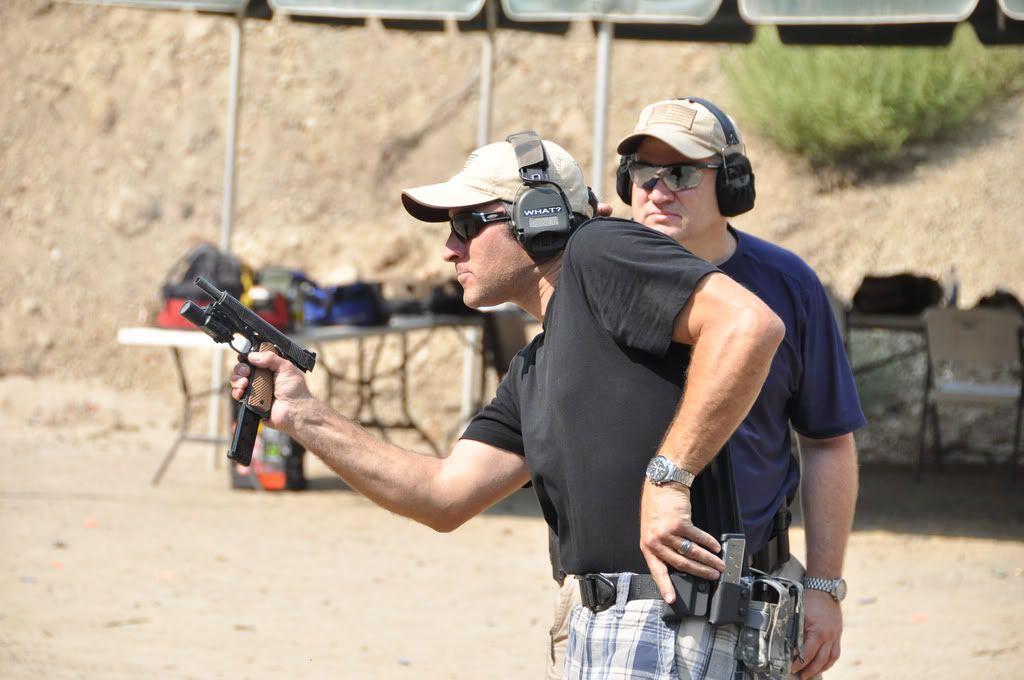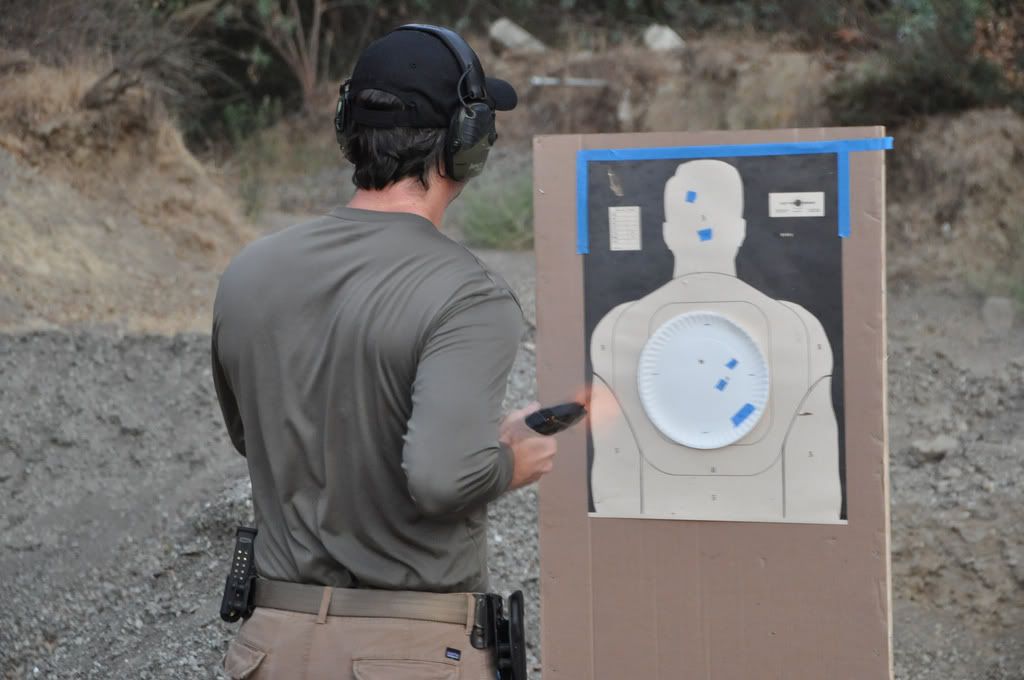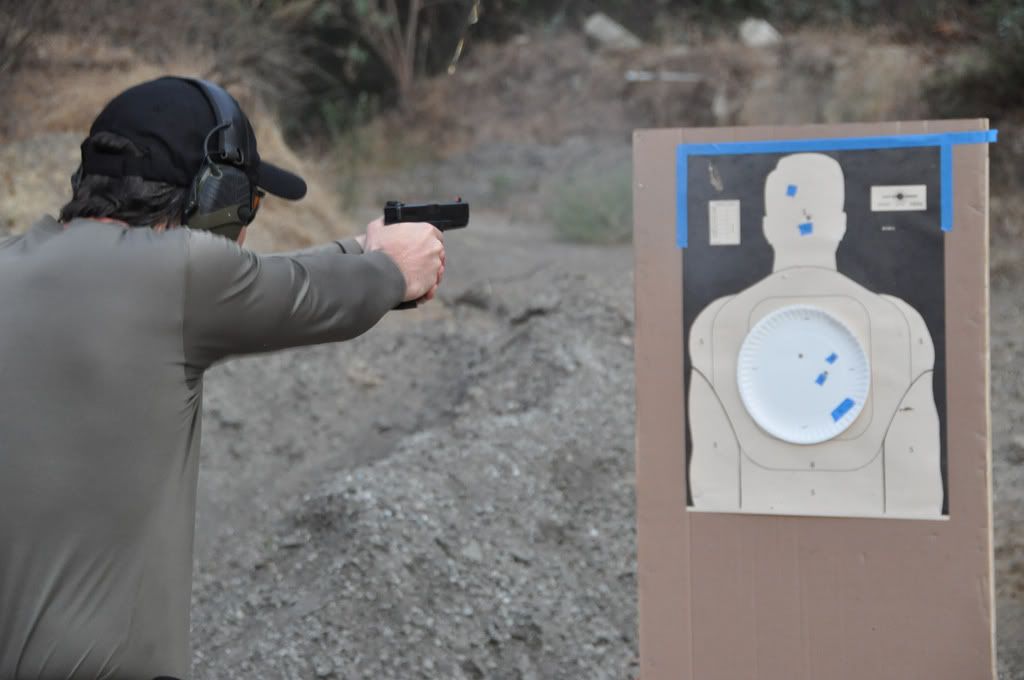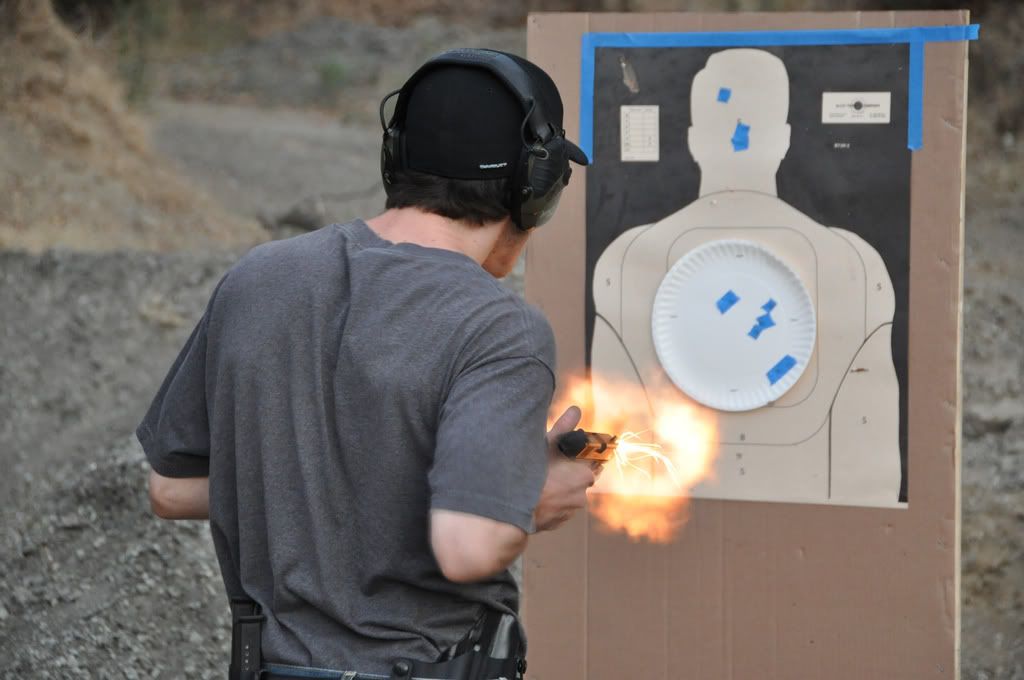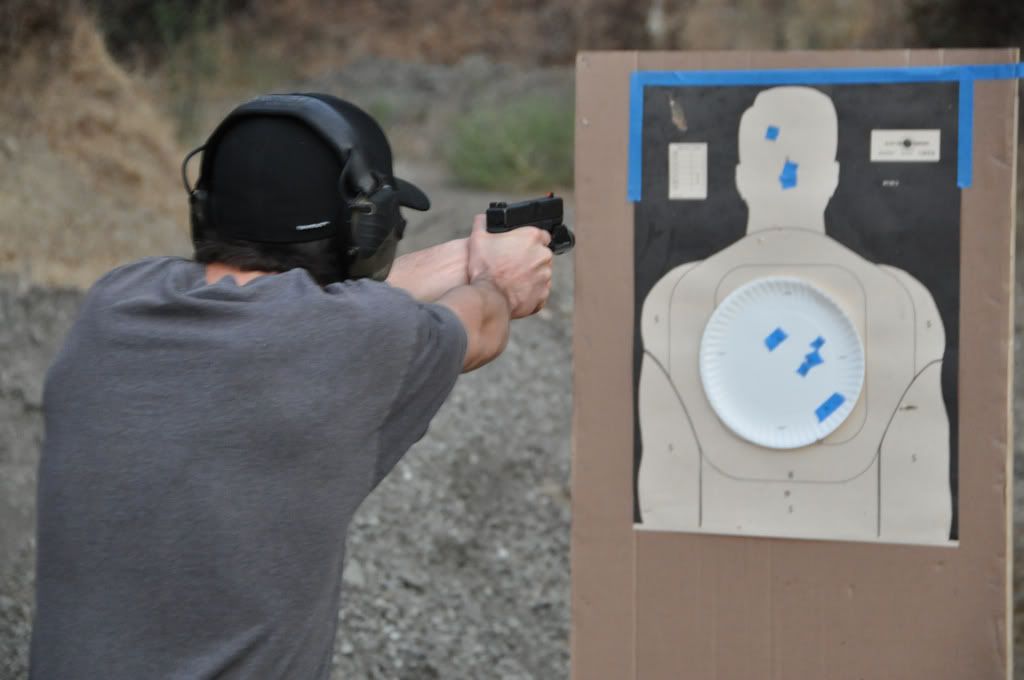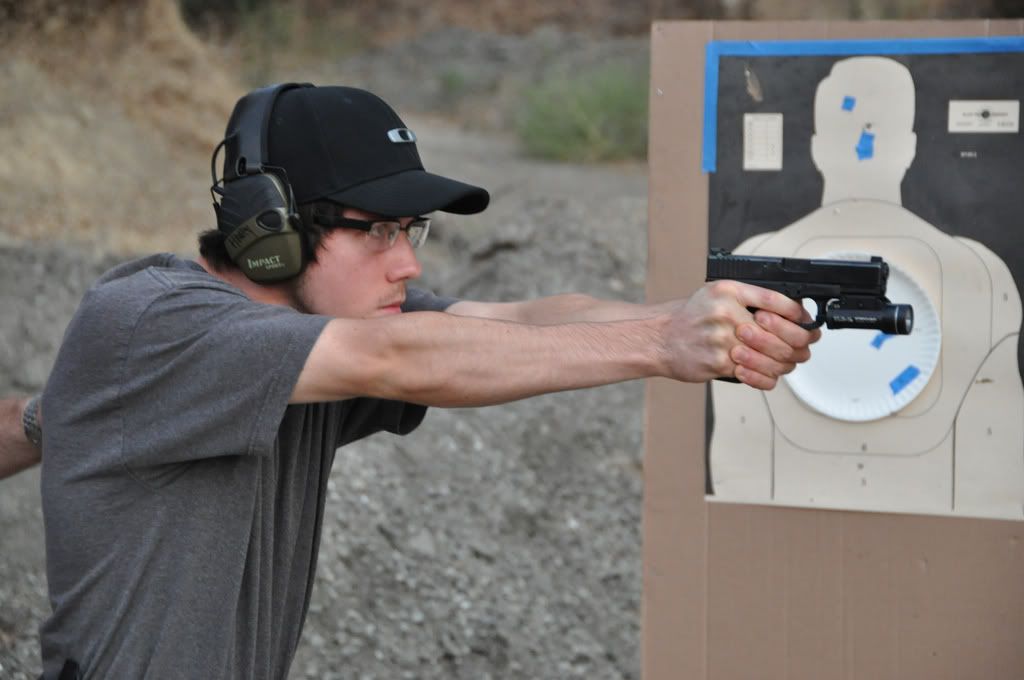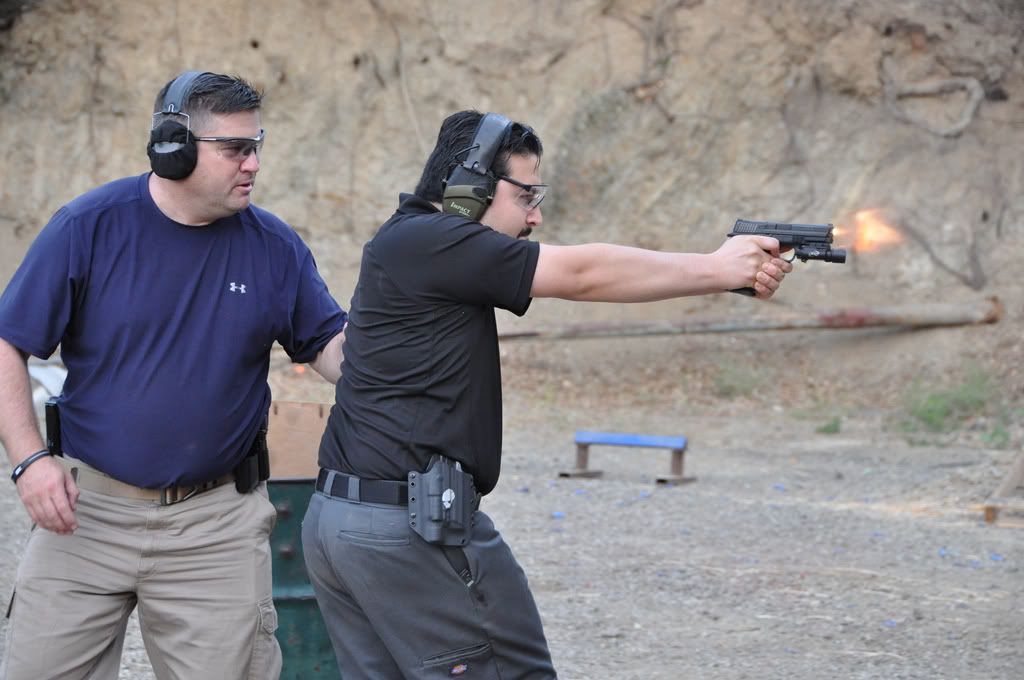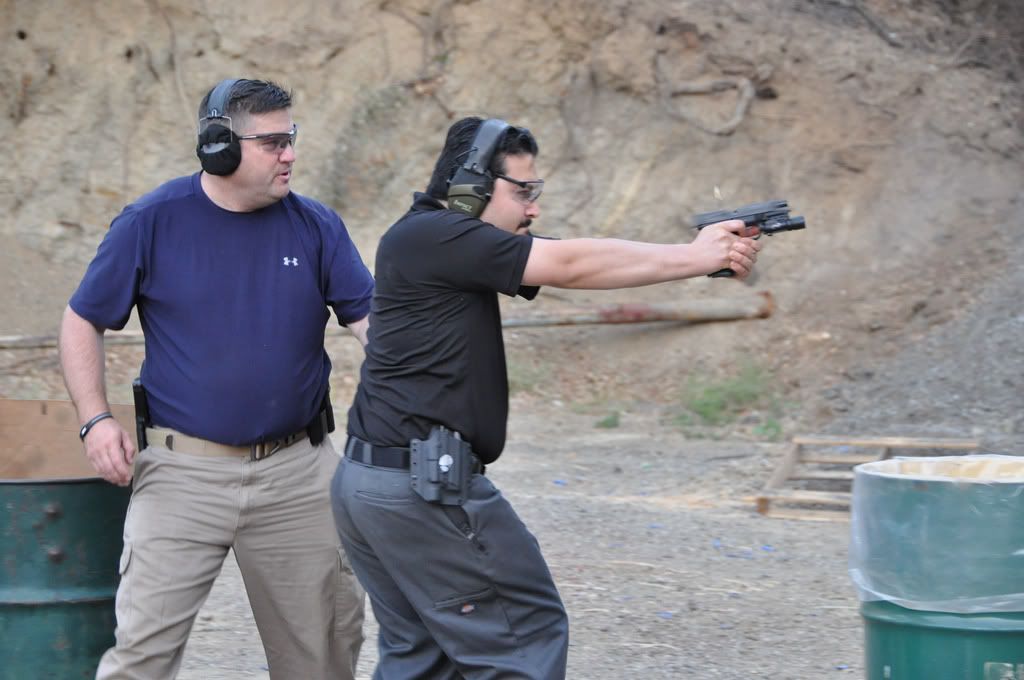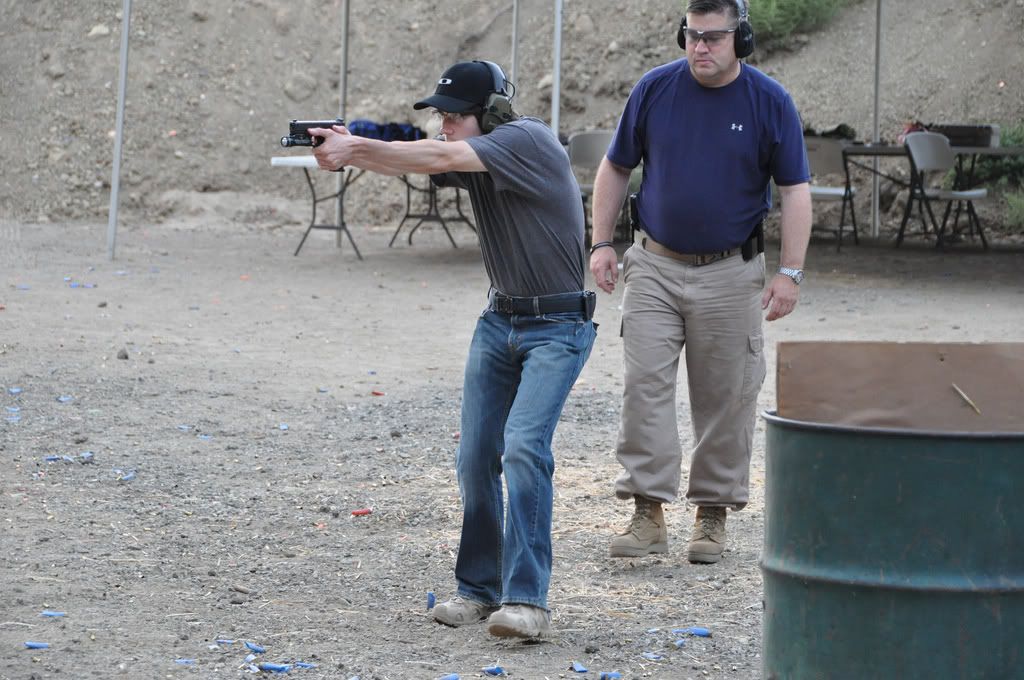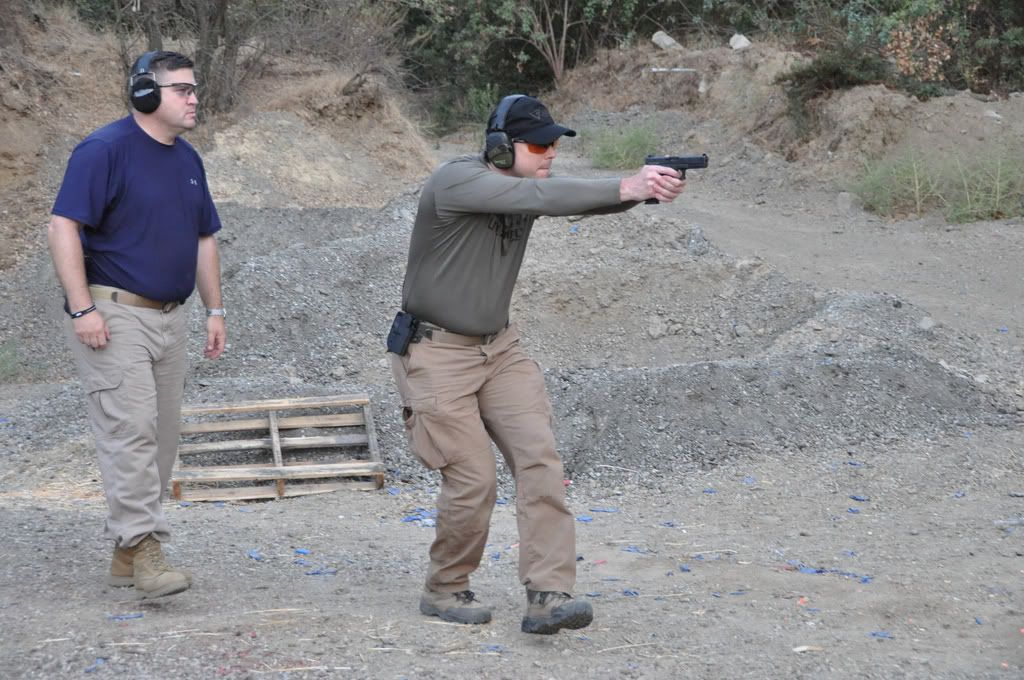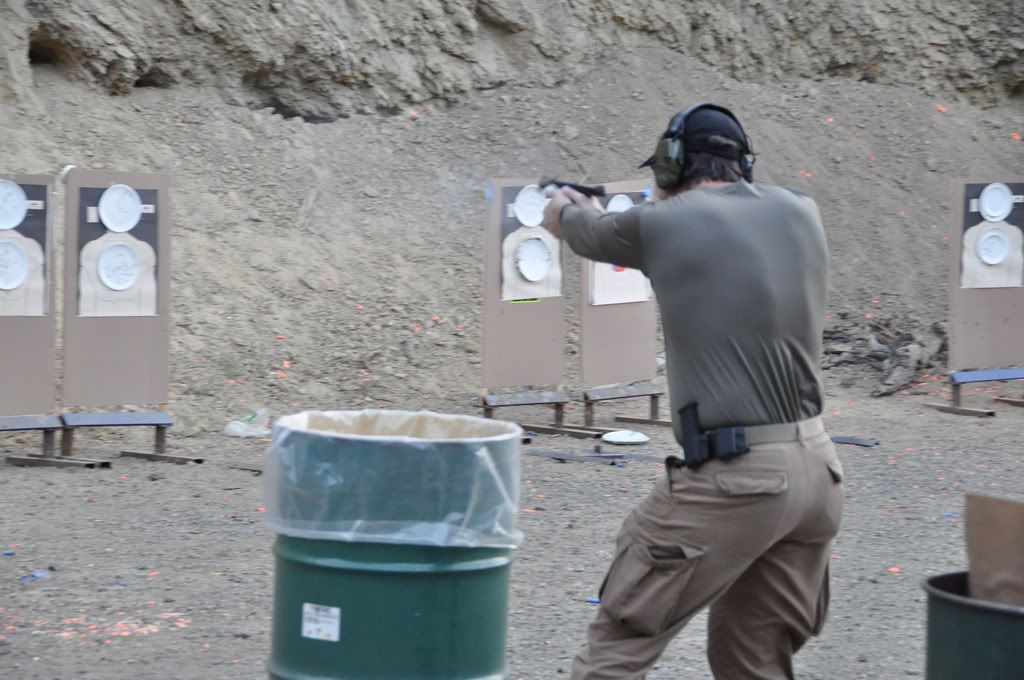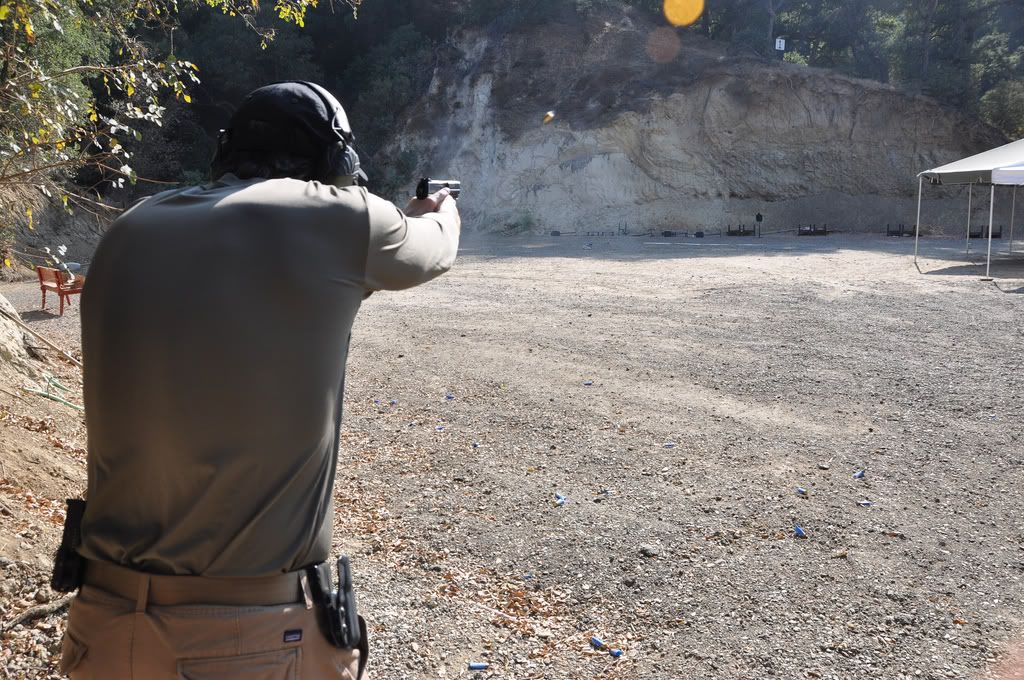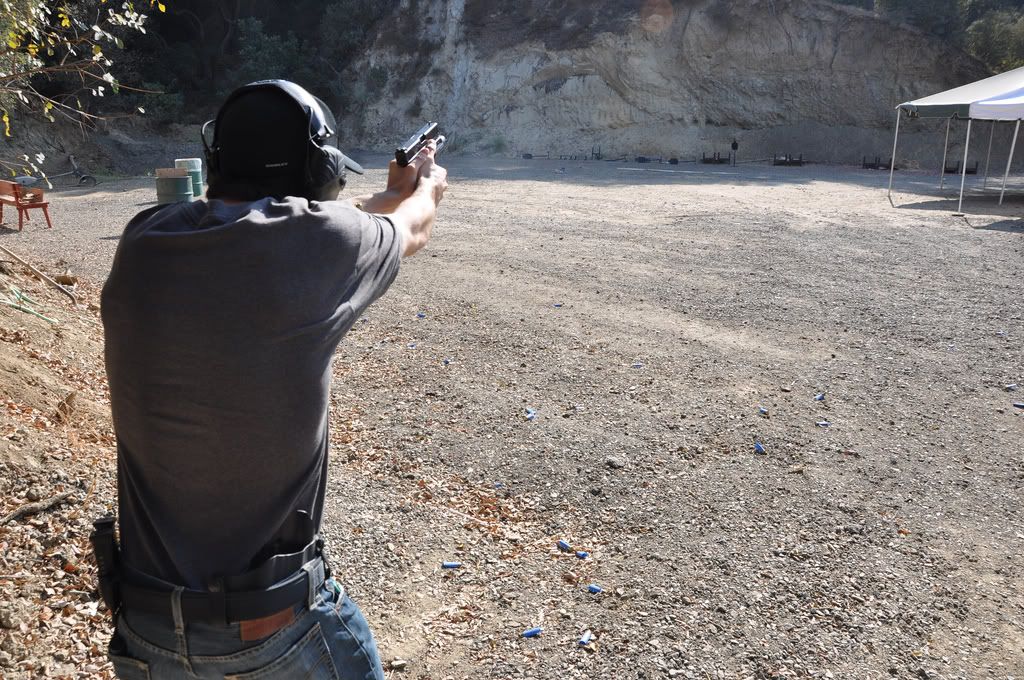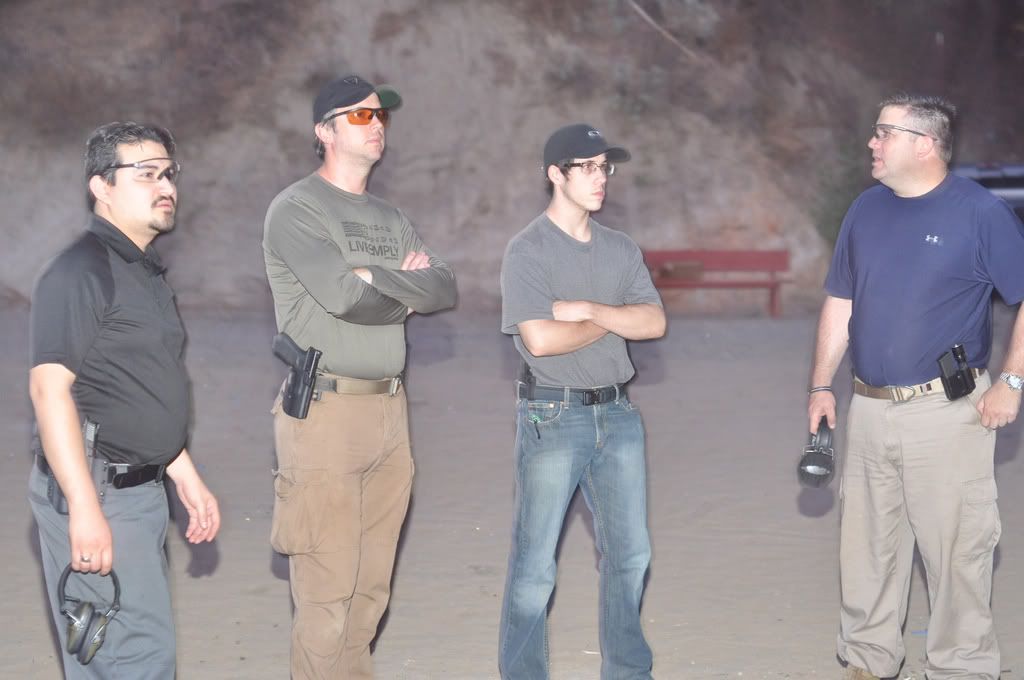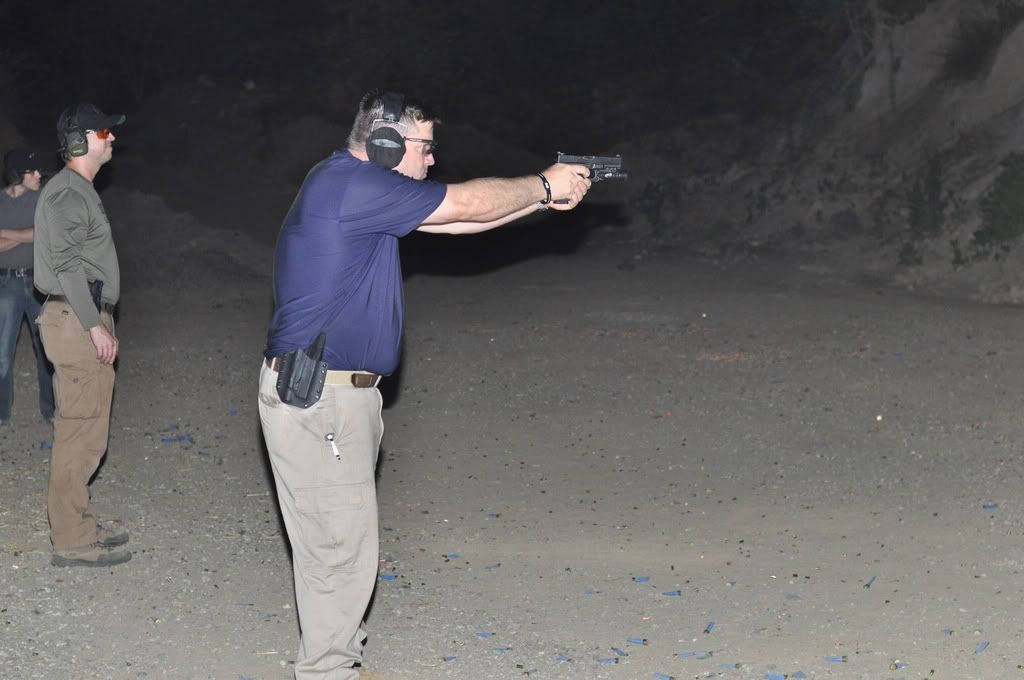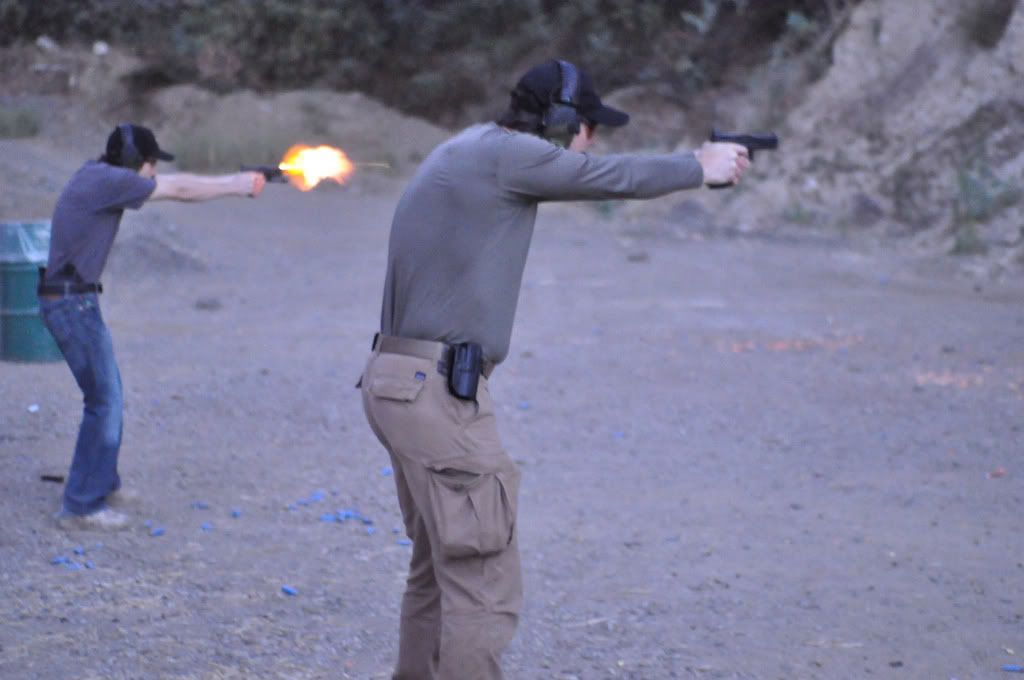-
Member

AAR - Mossie Tactics LLC - Pistol 2
Mossie Tactics LLC – Pistol 2
http://www.mossietactics.com/index.html
Overview: This is an intermediate to advanced course which included an increasing tempo of fire, multiple target engagement, shooting on the move, skill drills, and night fire. A great deal of time was spent shooting steel for it’s instant feedback, and about 5 total hours was spent in low-light instruction and shooting, including multiple trips through a low-light course of fire engaging six different targets at varying distances.
Course Dates: September 17 & 18, 2011
Teaching Approach: As previously noted in my review of Mossie Tactics’ Intro to Handgun course, the level of instruction was very good and followed a “building block” approach. Many skills built upon the previous skill, and were ultimately chained together to form more advanced techniques.
Rounds Fired: Round count was approximately 750 pistol rounds over two full days (8 hours of shooting time).
Range to Targets: Ranges varied from five yards to seventy yards.
Target Types: Targets varied from paper silhouettes, 2” dots on paper targets, 8” paper plates, and ½ size IDPA steel silhouettes. Targets were changed frequently to provide shooters and the instructor feedback and steel was painted between each string to provide feedback.
Weapons Used by Class Participants and Malfunctions Observed: Glock 19 (Gen 3) – no weapon related malfunctions; Glock 19 (Gen 4) – numerous malfunctions including at least double feed; Glock 17 (Gen 3 RTF 2) – no weapon related malfunctions; HK P30 LEM – no weapon related malfunctions; Nighthawk GRP .45 – no weapon related malfunctions; Springfield 1911 .45 (particular model unknown) – no weapon related malfunctions; S&W M&P 9 – no weapon related malfunctions.
Facility: The facility was a private range at the Oak Tree Gun Club in Newhall, California (approximately fifteen miles north of Los Angeles). The range used was secluded and away from general traffic, with a seventy yard long, bermed bay, and covered loading/rest area.
Course Outline (provided to give overview of skills learned - may be out of order and incomplete)
a. Safety Brief – each student was required to memorize these four rules and required to write them, from memory, on a waiver.
i. Four basic safety rules:
b. Review of Seven Fundamentals of Marksmanship
i. Stance
ii. Grip
iii. Sight alignment
iv. Sight picture
v. Breathing control
vi. Trigger control
vii. Follow through
c. Increasing tempo fire on small (2” circle) targets and recoil management
d. Traversing between multiple targets
e. Four count draw
f. Firing from retention
g. Malfunction clearing
i. Type 1
ii. Type 2 and
iii. Type 3
h. Ball and dummy drill incorporating malfunction clearance drills
i. Simulated Type 3 Malfunction clearance drill using ball and dummy
j. Shifting gears between firing from retention to distant steel
k. Shooting on the move
i. Forward and backward
ii. Laterally
iii. Barrel drills and figure “8” drills
l. Low Light Techniques
i. Flashlight techniques
1. Handheld – Harries, Surefire/Syringe, FBI
2. Weapon Mounted Light Techniques
ii. Low Light Fire on Steel
1. Using various handheld techniques
2. Discussion of Military, Law Enforcement and Civilian Techniques vis a vis “wall of light” and intermittent light
3. Using “relation to other objects”
4. With no light
5. Low light multiple threat techniques
6. Low light multiple target engagement course of fire walk through with six targets (three different arrays, including obscured targets, and oncoming light) (probably the coolest part of the class, these courses of fire gave students the opportunity to integrate the low light skills taught)
m. Test Fire of Various Defensive Loads For Flash Characteristics (See below)
A very cool aspect of this class was the opportunity to test defensive ammunition for flash characteristics. This can be very important in a defensive situation as a white flash, or overly large flash can ruin night vision for a long period of time.
Note - viewing in hi-def makes the differences much more discernible.
This first video has a little light to give the viewer some perspective on camera angle on subsequent tests, and distance from the camera. Camera is a little behind 90 degrees and approximately five feet from muzzle in all shots.
Flash Signature - Winchester Ranger 9mm (RA9T) 147 gr. JHP
Second set with Winchester Ranger 9mm (RA9T) 147 gr. JHP. Notice the soft red-orange flash. The Winchester ammo consistently had this "comfortable" flash.
By comparison, Hornady TAP 9mm JHP had a bright white flash that was significantly brighter than most others.
Following are an assortment of different defensive loads. I bought one box of everything in the gun shop to try for this series of tests.
Winchester PDX 1 9mm 124 gr. +P JHP
Speer Gold Dot Hollow Point 9mm 124 gr. +P - probably the best of the +P ammo
Cor Bon DPX 9mm 115 gr. +P - fairly bright white flash, a good bullet but the trade off is brighter flash
Remington Golden Saber 9mm 124 gr. JHP - more spark than flash. Widely reputed to be blindingly bright. Maybe Remington has changed the formula since that criticism, to be fair, from the shooter's perspective, it is actually pretty low flash, though the sparks make it seem bad. My favorite is still the reds from the Winchester ammo.
Federal Premium Guard Dog 9mm 105 gr. JSP
Now for the .45s
USGI Contract .45 acp 230 gr. Ball (yes, real USGI donated by a jug head, er, I mean...)
Winchester Ranger .45 acp 230 gr JHP - soft red flash
Remington Golden Saber .45 acp 230 gr. JHP "FBI Load" - reputedly developed at the request of FBI's HRT program, often claimed to have a very bright flash. Here, it was more spark than flash, though the color was a white, to yellow/white. The final video exceeded the allowed max, so here is a link: http://youtu.be/JqRT4f-lQd0
My conclusions - the Winchester offerings tend to consistently offer a more manageable flash, both in terms of overall volume and color.
-
-
-
-
-
Murder Machine, Harmless Fuzzball

Great low light demo vids.
 Posting Permissions
Posting Permissions
- You may not post new threads
- You may not post replies
- You may not post attachments
- You may not edit your posts
-
Forum Rules




 Reply With Quote
Reply With Quote